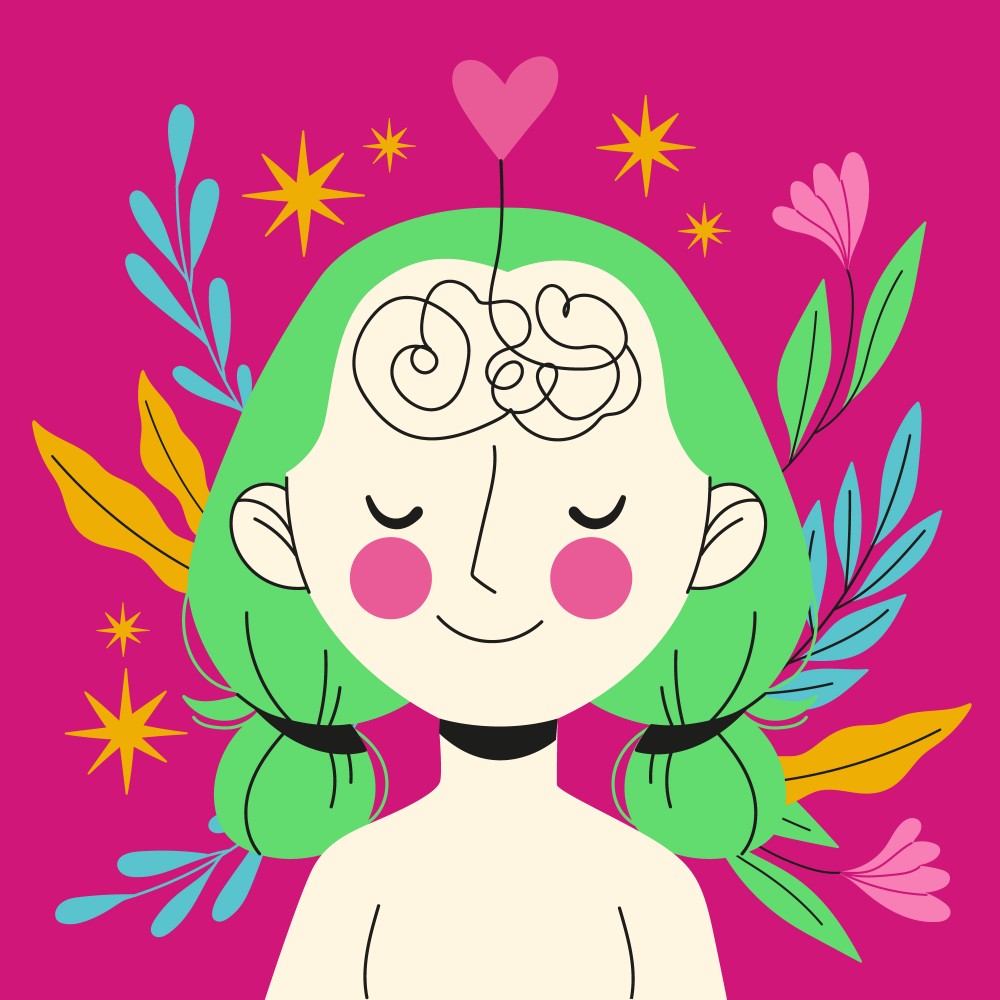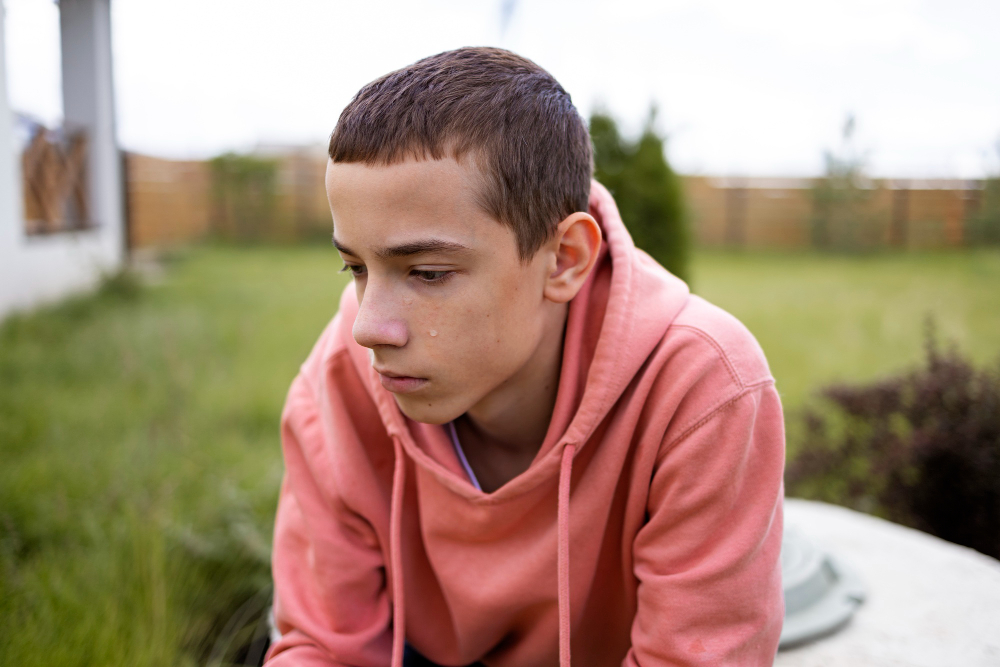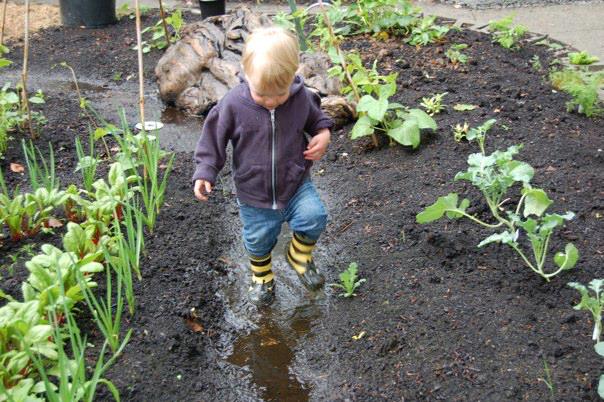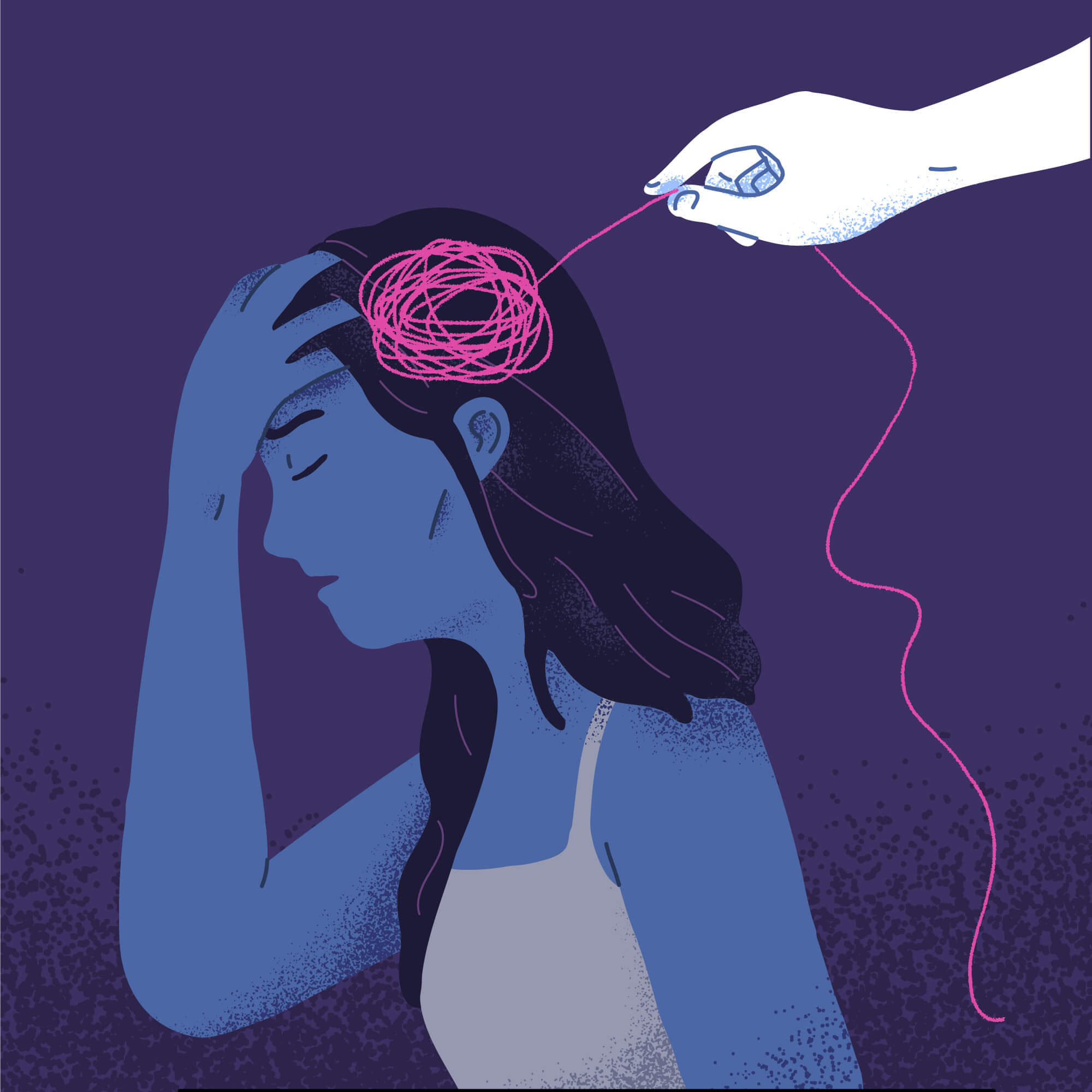Every person’s ability to thrive is deeply shaped by their environment. None of us are our best self in a room starved of oxygen – in other words, even the healthiest individual would struggle in an inhospitable setting. This truth is magnified for neurodivergent people (such as autistic, ADHD, or otherwise neurologically atypical individuals) who often face environments that don’t meet their needs. A neurodiversity-affirming, disability justice perspective recognizes that the problem is usually not the neurodivergent person, but the mismatch between the person and their surroundings frontiersin.org theautisticadvocate.com. By peeling back the layers of this issue – from individual “behaviours” to family life, community supports, and broader social systems – we can see how compassionate environments enable neurodivergent people not just to survive, but to truly thrive. This essay explores those layers of the onion: how people adapt to or are harmed by their environments, why radical acceptance and accommodation are forms of survival, and how embracing a disability justice framework can transform mere survival into genuine flourishing.
-
Few of us remain our best selves in a room starved of air
If you are a parent of a neurodivergent child, you can recite the script before the phone even buzzes. “[Child] had a very good day and really showed leadership with the younger kids” Pause. “But in the afternoon [Child] had some unexpected behaviour. [Child] is…
Embracing neurodiversity and the social model of disability
Over the past few decades, autistic self-advocates and allies have advanced a powerful paradigm shift: the neurodiversity movement. Instead of viewing autism and other neurodivergences as illnesses or defects to be “fixed,” the neurodiversity perspective values these as natural variations in the human population frontiersin.org frontiersin.org. Autism is not an inherently tragic “outcome,” but rather one facet of human diversity – and autistic people constitute a marginalised group that faces disparities and discrimination much like other minority groups frontiersin.org. This reframing draws on the social model of disability, which holds that disability largely arises from a mismatch between an individual’s needs and their environment or societal design, rather than from some intrinsic flaw in the person. As the neurodiversity-affirming scholar Kieran Rose explains, we must look at the whole human systemically, recognising not only each person’s unique neurology but also “the factors, systems and ecologies around that person” with which they interact theautisticadvocate.com. Human minds are diverse, and no one way of thinking is “right” – what often makes a trait disabling is the context.
In contrast to the old deficit-focused mindset, the neurodiversity paradigm asks society to change its attitudes and systems. It means valuing neurodivergent people as equal members of society and acknowledging that much of their struggle comes from external barriers and stigma frontiersin.org. For example, an autistic child’s difficulty in a loud, chaotic classroom says less about the child’s “problem behaviour” and more about how ill-suited the environment is to that child’s sensory needs. The neurodiversity perspective therefore emphasises supports and accommodations over “cures” or normalisation. Professionals and families are encouraged to centre the voices of autistic people and provide the tools and adjustments needed for them to thrive on their own terms frontiersin.org. In practical terms, this might mean using alternative communication methods, allowing stim toys or sensory breaks, providing predictable routines, or adjusting lighting and noise levels. The goal shifts from making the person appear more “normal” to changing the environment and expectations to fit the person – ultimately creating a more inclusive world for all.
This approach aligns closely with the principles of Disability Justice, a framework developed by Black, brown, queer, and disabled activists (such as the collective Sins Invalid). Disability justice goes beyond simple inclusion and demands a fundamental rethinking of power structures. It emphasizes intersectionality, interdependence, and valuing the inherent strengths of disabled communities frontiersin.org. Rather than slotting neurodivergent people into pre-existing ableist systems, disability justice calls for “inherently anti-ableist” systems built by and for disabled people frontiersin.org. In other words, instead of asking neurodivergent individuals to constantly adapt to a world not built for them, we collectively redesign our world. When we do so – when our worldview truly values neurodivergence and we dismantle oppressive norms – the outcomes can radically improve. We stop measuring success by how well someone mimics a neurotypical behaviour, and start measuring it by well-being, autonomy, and genuine inclusion frontiersin.org. Embracing neurodiversity and disability justice means moving from a paradigm of “fixing people” to fixing environments and attitudes. It is a call to action to remove the proverbial “glass ceiling” of ableism so that neurodivergent people can breathe freely and be themselves, without suffocating under others’ expectations.
-
Debility versus disability: what the system cannot acknowledge
My son Robin took to bed two weeks before March break. He had been soldiering on through the aftermath of a school transfer the district assured us would help him, though his body told me otherwise from the first day he arrived. I’ve…
Humans are shaped by their environments (the oxygen analogy)
Behaviour does not occur in a vacuum. Just as a flame needs oxygen to burn, humans need supportive conditions to bring out their best. If you seal someone in an airless room, they will falter – not because they are “weak,” but because the environment is unlivable.
In everyday life, many neurodivergent people exist in the equivalent of oxygen-poor rooms: environments that constantly tax their sensory, emotional, or cognitive systems. Over time, the stress of surviving in such a space can lead to exhaustion, “challenging” behaviours, or mental health crises. It’s vital to recognise that behaviour is often a form of communication – a signal of the person’s needs or of distress in their context. As one neurodiversity training puts it, all children communicate their needs through their behaviours blogs.glowscotland.org.uk. A meltdown, withdrawal, or outburst is not random “misbehaviour”; it may be saying “This situation is overwhelming,” “I am in pain or confused,” or “I need help but can’t express it in words.” If adults remain open to this perspective, they can shift from punishing or pathologising the behaviour to understanding the message behind it linkedin.com.
Crucially, changing the environment can prevent or resolve many of these behaviours. For instance, consider an autistic student who struggles to concentrate and frequently leaves their seat in a loud classroom. Traditional approaches might label this as a problem within the child and try to train them to “cope.”
A neurodiversity-affirming approach, however, would ask: What about the classroom is like low oxygen for this child? Perhaps the fluorescent lights and echoing noises are overwhelming their sensory system. Perhaps unstructured social interactions at recess are causing anxiety that later erupts.
By adjusting these factors – say, providing noise-cancelling headphones, a quiet corner for breaks, a clear routine, or a buddy system at recess – the child’s distress signals may subside, revealing a calmer and more engaged student. The child hasn’t fundamentally changed; the environment has. This exemplifies the social model: the disability (in this case, difficulty functioning in class) was produced by a mismatch between the child and their setting, and it was alleviated by altering the setting.
Layers of environmental factors
We can imagine human development as an onion with multiple layers of environmental influence, as described in ecological models of psychology. At the innermost layer is the individual’s immediate setting – for a child, this might be their home or classroom. Surrounding that are wider layers: extended family, neighbourhood, schools, workplaces, healthcare systems, cultural norms, and policies.
Each layer can either provide “nourishment” or drain life from a neurodivergent person.
In a supportive immediate environment, a neurodivergent individual might hardly seem “disabled” at all. For example, an autistic person in a quiet, predictable workspace with empathetic colleagues can excel brilliantly, whereas the same person in a chaotic, inflexible workplace might burn out quickly.
Larger systemic layers matter too: a community that is educated about neurodiversity and celebrates differences will offer far more oxygen than one steeped in stigma.
The principle of “nothing about us without us” – involving neurodivergent people in decisions at every level – helps ensure these layers of society truly meet real needs. When each layer of the onion is peeled back, we often find that the root cause of distress was not the person’s neurology itself, but the friction between that neurology and some environmental expectation or barrier theautisticadvocate.com.
Put simply, context is key. A person who is calm and joyful in one context may be agitated and struggling in another. Neurodivergent author and educator Nick Walker notes that human brains and bodies respond to external inputs constantly – who we are is shaped by an ongoing interaction with our surroundings theautisticadvocate.com.
Recognising this dynamic frees us from blaming individuals for their challenges. Instead, we can respond the way we would to anyone gasping in a low-oxygen room: open a window, adjust the situation, and provide relief. This understanding builds empathy – it reminds us that negative behaviours or shutdowns are not personal failings, but signs that something in the environment needs to change. And importantly, this truth applies to everyone, neurotypical and neurodivergent alike: no one thrives in hostile conditions. The difference is that neurodivergent people are often forced to endure hostile conditions as a matter of course. Our collective task is to change those conditions.
-
Create an ideal environment
For children with a pathological demand avoidance (PDA) profile—those whose nervous systems interpret external control and unpredictable sensory or relational conditions as threat—the environment is not a neutral backdrop but an active force shaping their every moment. When we expect adaptation without accommodation,…
Autistic parents, hidden neurodiversity, and radical accommodation
One powerful illustration of environment’s impact is seen in families where neurodivergent parents (perhaps undiagnosed) are raising neurodivergent children. Many autistic or otherwise neurodivergent adults grow up learning ways to cope in a neurotypical world, often without having a name for why certain environments are hard for them.
Consciously or unconsciously, these adults engineer their home lives to be neurodiversity-friendly – a form of radical self-accommodation.
For example, a neurodivergent parent might favour a calm, quiet household because they personally cannot tolerate chaos or sensory overload. They might communicate with their children in straightforward, explicit ways because they prefer clear communication. They might allow flexible routines, unconventional play, or provide sensory comforts (like swings in the living room or dim lighting) simply because it feels right for their family. In doing so, these parents create a kind of sanctuary environment where both they and their children can be themselves without needing to mask or constantly adapt.
Such a home can be thought of as an ideal ecosystem for a neurodivergent child – akin to a greenhouse with just the right temperature and soil for a particular plant. Within this space, the child may display far fewer “problem behaviours” than one might expect, because their needs are being met.
The parents might not even realise how many tacit accommodations they’re providing; they might just think they’re “doing what any good parent would.” It’s not until the child (or the parent) ventures into a drastically different environment that the contrast becomes clear.
A common experience is that a child who is content and well-regulated at home will have severe difficulties in a standard institutional setting (like a school, a daycare, or a therapeutic program that is not neurodiversity-informed). The child who was calm and joyful in their oxygen-rich home may start to wilt in the oxygen-poor institution – perhaps melting down, withdrawing, or showing other signs of distress. This can be bewildering and traumatic for both child and parent if they were unprepared for it.
Neurodivergent adults who only discover their own neurodivergence after their child is diagnosed often have a retrospective “aha” moment. They realise that the reason their home environment works so well for their child is that they themselves needed it that way too. In essence, they have been buffering their family from the worst effects of an ableist world without knowing it.
But when their child enters an environment not under the parent’s control – for instance, a school that demands quiet sitting for hours, or a behaviour therapy center that insists on eye contact and suppressing stims – the child’s resulting trauma lays bare the harshness of that environment. Many autistic advocates and parents report that their children’s worst crises often happen in inflexible, non-affirming systems, not at home frontiersin.org blogs.glowscotland.org.uk. In some heartbreaking cases, families have seen their children regress or develop severe anxiety after being subjected to high-pressure schooling or behavioural interventions, despite thriving previously in a supportive home.
This disparity is sometimes referred to in autistic communities as the “two different kids” phenomenon – a child might seem like Dr. Jekyll in one setting and Mr. Hyde in another, to borrow psychologist Tony Attwood’s description autism.org.uk. But it’s the same child all along, only the environments differ. For example, an autistic boy might be perfectly functional and communicative at home where he can stim freely, eat preferred foods, and follow his interests; at school, however, he may shut down or explode because those coping strategies are denied (perhaps the school forces eye contact, disallows his stress ball, or punishes him for not sitting still). The parents who witness this transformation often describe it as peeling away a layer of protective bubble and suddenly seeing how the world treats their child – a harrowing awakening. In essence, the child’s institutional experience is like taking a deep-sea creature and yanking it to the surface: of course it struggles, because all the pressure and conditions it’s adapted to are gone. The carefully structured environment that once cushioned the child (and parent) is revealed to be not the norm, but rather the exception in a largely ableist society.
-
The high stakes of understanding PDA
Pathological Demand Avoidance (PDA) might sound like just another clinical term, but for many families it represents a daily struggle that is anything but trivial. PDA is a profile on the autism spectrum characterised by an extreme, anxiety-driven avoidance of everyday demands, even those the child wants to…
This realisation can be traumatising for families. Parents may feel guilt (“Did I shelter my child too much?”), along with anger and sorrow at systems that are ill-equipped to humanely support their child. It underscores a key disability justice insight: what appears as “radical accommodation” or special treatment in a neurotypical framework is simply humane and necessary care for a neurodivergent person.
No one would fault a parent for providing their child oxygen; likewise, we should not fault parents for providing sensory calm, communication that suits the child, or other needs. If anything, the rest of society should learn from these natural experts – the autistic people and families who have learned through lived experience how to enable neurodivergent individuals to flourish. The task is then to export those accommodations into schools, clinics, and public life so that a child isn’t safe only at home but everywhere. The painful lesson from these families’ experiences is that the wider world must change, because neurodivergent children should not have to be traumatized by institutions in order for society to realize the importance of what their parents were doing all along.
Surviving hostile systems: masking, trauma, and burnout
When neurodivergent people find themselves in environments that constantly demand they be someone they are not, they often resort to survival strategies. One such strategy is masking – suppressing or hiding one’s natural neurodivergent behaviours and imitating neurotypical norms to avoid negative consequences.
Autistic individuals, for example, might force themselves to make eye contact, stay silent about sensory pain, or rehearse social scripts to blend in. While this can help them “get by” or escape bullying in the short term, masking comes at a steep cost. Research and personal accounts have shown that prolonged masking can lead to intense exhaustion, anxiety, depression, loss of identity, and ultimately autistic burnout autism.org.uk pubmed.ncbi.nlm.nih.gov.
The National Autistic Society warns that trying to appear non-autistic “can have a devastating impact on mental health [and] sense of self” autism.org.uk. Essentially, masking is like running on fumes – eventually the person’s mental and physical energy is depleted from the constant self-monitoring and pressure. Many autistic adults report that after years of masking through school or work, they hit a breaking point where they cannot continue the charade, and they experience collapse or severe mental health crises autism.org.uk pubmed.ncbi.nlm.nih.gov. This is not a failure of the individual’s resilience; it is a failure of society to provide breathable air.
Another outcome of hostile environments is trauma. Neurodivergent people, especially autistic individuals, face extremely high rates of adverse experiences such as bullying, abuse, and coercive “treatments” in childhood. Psychologists are increasingly recognising that autistic people may develop Post-Traumatic Stress Disorder (PTSD) or complex trauma at higher rates than the general population thetransmitter.org. In one study, 70% of autistic youth were found to have at least one co-occurring psychiatric condition (like anxiety or depression) thetransmitter.org, and many of these difficulties can be traced to chronic stress or traumatic events rather than autism itself. An autistic child who endures years of being misunderstood and punished in school, or a teenager who is socially ostracised and harassed, or an adult who cannot find a workplace that accommodates them – all these scenarios create layers of trauma. As Dr. Connor Kerns, a researcher in this field, notes, the world can be “chaotic and crazy” even for typically developing people, “for [an autistic person], it’s overwhelming and confusing” – and that overwhelm can compound into clinical PTSD thetransmitter.org thetransmitter.org.
-
The unseen wounds of advocacy: caregiver burnout, moral injury, and embodied grief
Caregiver burnout in BC schools reflects moral injury and systemic betrayal, as mothers fight exclusion and harm while advocating for disabled children.
Perhaps most tragically, some of the very interventions meant to “help” autistic people have caused harm. A stark example is Applied Behaviour Analysis (ABA), a common therapy for autistic children that focuses on training compliance and reducing autistic behaviours. Many autistic adults who underwent intensive ABA in childhood have described it as traumatic.
They report “lasting trauma… feelings of shame for natural behaviours and a lack of agency over their own lives” after being subjected to compliance-based interventions that ignored their boundaries mdpi.com. One study found that a large proportion of autistic individuals exposed to ABA showed PTSD symptoms in later life psychologytoday.com. Early ABA programs (and some current ones) often had the goal of making the autistic child “indistinguishable from peers”, which meant suppressing harmless self-stimulatory behaviours (stimming), forcing eye contact and speech, and discouraging any divergence from neurotypical norms mdpi.com mdpi.com. While the intentions may have been to help the child fit in, the message the child often received was: “Who you are is wrong. Hide it.” This kind of invalidation is deeply damaging. It teaches a child to ignore their own pain signals (for instance, “don’t flinch from touch, that’s not normal”) and to constantly doubt their own instincts. The trauma is not autism; the trauma is the world’s response to autism. When autistic people say a therapy or setting hurt them, we have a moral obligation to listen and change those practices mdpi.com mdpi.com.
All of these survival responses – masking, shutting down, melting down, developing anxiety or PTSD – are signs of individuals trying desperately to adapt to environments that feel hostile or barren to them. Just like a plant that grows spindly and pale in poor soil, neurodivergent people living in non-affirming conditions will show signs of distress. It should never be interpreted as them being “lesser” or inherently broken. In fact, the very presence of these coping mechanisms is a testament to their resilience in the face of adversity. They are doing what they must to survive. But survival is not where we should stop. Disability justice demands that we not leave people in survival mode indefinitely, much less blame them for it. Instead, we must change the conditions so that survival tactics like masking or constant fight-or-flight anxiety are no longer necessary. When a neurodivergent person moves from a punitive environment to a supportive one, the difference can be night and day. Countless families and individuals have seen that when the pressure to mask or conform is lifted, the person’s true strengths and personality blossom – much like seeing a wilted plant revive when finally given water and sunlight.
From surviving to thriving: the power of acceptance and support
What does it look like when neurodivergent people have an environment that truly supports them? In a word: thriving. They move from merely surviving each day (enduring stress, suppressing themselves, running into barriers) to being able to grow, learn, create, and contribute in authentic ways. A neurodiversity-affirming and disability justice approach works to create these thriving conditions at all levels. It starts with radical acceptance – sending the message “I accept you and like you for who you are” blogs.glowscotland.org.uk. For a child, this might be communicated by parents and teachers who celebrate the child’s unique quirks and follow the child’s lead in play. For an adult, it could mean friends or partners who don’t bat an eye at accommodations and who value the person’s differences (like their honesty, creativity, or detailed focus) as strengths rather than deficits. Acceptance lays the groundwork for everything else, because a person who no longer fears rejection can begin to take risks and stretch their abilities.
-
When energy returns: on finding purpose, refusing silence, and recovering from institutional harm
When I could barely rise from the couch, I believed my exhaustion was depression. Now I see it was the cumulative harm of years spent silencing myself in hostile institutions, suppressing truth to protect my neurodivergent children. The body remembers this violence; it…
Next comes accommodation – not as a grudging concession, but as an expectation. We all use accommodations in life (glasses for vision, chairs to rest, phones to communicate), and neurodivergent people may need specific ones for their neurologies.
The difference in a thriving scenario is that these supports are readily available and built-in, not treated as special favours. In practical terms, it means classrooms with flexible seating, offices with quiet rooms and sensory-friendly design, events that offer written agendas and visual aids, and policies that allow alternative communication or flexible deadlines.
It also means cultivating a “safe ecology of care” around individuals neuroclastic.com neuroclastic.com. Autistic advocate Jorn Bettin describes how small, tight-knit communities of neurodivergent people supporting one another can create a powerful buffer against the outside world neuroclastic.com neuroclastic.com. Within these “safe ecologies”, people learn to trust, to drop their masks, and to cooperate in truly innovative ways. They function more like symbiotic teammates than like competitors, each bringing their own special skills neuroclastic.com neuroclastic.com. This environment of mutual understanding and “de-powered” collaboration (where no one is imposing power-over on others) allows neurodivergent individuals to share the load of interfacing with the mainstream world neuroclastic.com. For example, one person might step up in a situation that plays to their strength while another rests, and vice versa – an interdependent model that contrasts sharply with the hyper-individualism of modern society.
At a broader social level, moving from surviving to thriving involves systemic change. Disability justice, as noted, urges us to center those most impacted in designing solutions. This could mean autistic people co-creating school curricula that work for neurodiverse learners, or neurodivergent adults leading workplace inclusion programs. It means listening when disabled communities critique a service or propose a new approach. When neurodivergent voices said the old methods of dealing with autism were harmful, professionals began to take note and adjust practices mdpi.com mdpi.com.
We see the beginnings of a shift: for instance, some therapists now emphasise “assent-based practices” (ensuring the autistic person is comfortable and agrees with what’s happening) and focus on goals like communication and life skills the person values, rather than enforcing eye contact or quiet hands mdpi.com mdpi.com. Schools are exploring universal design for learning, which offers multiple ways to learn and show knowledge, benefiting neurodivergent and neurotypical students alike. Workplaces are instituting mentorship programs and sensory-friendly office layouts. These changes are not only ethically right; they often end up helping everyone. After all, when you make a room rich in oxygen, all the people in it breathe easier. A classic example is curb cuts in sidewalks (originally fought for by wheelchair users, now appreciated by parents with strollers, travelers with luggage, etc.) – in a similar vein, a quieter, more structured classroom can help students with autism and their neurotypical peers who also concentrate better in calm settings.
Ultimately, the journey from survival to thriving for neurodivergent people is a collective one. The onus should not be on an autistic child or adult to continuously adapt to an inhospitable world; it is on all of us to adapt the world. As the disability rights slogan says, “the world has to adjust, not the person.” When we peel back the layers of a person’s struggles and find environmental causes, it becomes clear that compassion and justice require removing those causes. Every layer of society – family, school, workplace, healthcare, community – can either add a layer of support or a layer of constraint. The vision of neurodiversity and disability justice is to transform these layers into a nourishing, breathable ecosystem for neurodivergent people. And when neurodivergent people thrive, it enriches our whole human community with their insights, creativity, sincerity, and divergent thinking.
-
What would it really cost to fix the problem?
We talk so much about the cost of inclusion—as if it’s indulgent, optional, something that must be justified—but we rarely talk about the cost of exclusion. And those costs are everywhere: in emergency rooms, in overburdened case files, in classrooms where distress goes…
In conclusion, none of us thrive in a vacuum. We each need understanding, acceptance, and fitting environments to be our best – just as every being needs oxygen. Neurodivergent individuals have often been denied that basic right in many areas of life, forced to survive under conditions that stifle their true selves.
But change is possible. By affirming neurodiversity, listening to those with lived experience, and committing to disability justice principles, we can ensure that neurodivergent people need not live as “canaries in the coal mine” of our institutions neuroclastic.com. Instead, we create a world where those canaries sing – a world where neurodivergent children and adults breathe freely, surrounded by the support they deserve, and able to grow into their fullest selves. The layers of the onion – individual, family, community, society – can all align to sustain life. It’s up to us to make sure that happens, so that surviving is no longer the goal; thriving is.
References:
- McVey, A. J., et al. (2023). Mindshift in autism: a call to professionals in research, clinical, and educational settings. Frontiers in Psychiatry, 14, 1251058. Emphasises shifting from a deficit model to valuing autism as human diversity frontiersin.org frontiersin.org.
- Rose, K. (2024). What is Neurodiversity? The Autistic Advocate. Explains the neurodiversity paradigm and the importance of considering the whole person in context, including external factors and systems theautisticadvocate.com.
- Sins Invalid (2018). Disability Justice – A Second Perspective. Originators of the disability justice framework, focusing on intersectionality, interdependence, anti-ableism, and community-led systems frontiersin.org.
- Professional Learning (Scottish Borders). Neurodiversity: All behaviour is communication (2025 course description) – notes that children communicate needs through behaviour and the value of neurodiversity-affirming approaches blogs.glowscotland.org.uk.
- National Autistic Society (2017). Different behaviour between school and home. Highlights how autistic children may present differently based on environment, sometimes appearing to cope in one setting and releasing distress in another autism.org.uk.
- Gravitz, L. (2018). At the intersection of autism and trauma. Spectrum/The Transmitter. Discusses high rates of trauma in autistic youth and the role of environmental stressors (e.g., bullying); includes Dr. Connor Kerns’ observation that about 70% of autistic kids have co-occurring psychiatric conditions thetransmitter.org.
- Johnson, J. F. (2025). From Harm to Healing: Building the Future of ABA with Autistic Voices. Societies, 15(3), 72. Documents autistic individuals’ critiques of ABA; notes reports of lasting trauma and loss of autonomy from compliance-based interventions mdpi.com.
- National Autistic Society (2025). Masking. Explains masking (camouflaging) and its mental health impact, warning that appearing non-autistic to blend in can severely affect well-being and self-identity autism.org.uk.
- Botha, M. (2020). Autism and the double empathy problem. (Referenced conceptually). Proposes that communication issues are two-way (between autistic and non-autistic people), reinforcing that difficulties often arise from a mismatch in understandings rather than a one-sided deficit.
- Bettin, J. (2023). Nurturing healthy Autistic relationships. NeuroClastic. Describes the idea of a “safe ecology of care” for autistic people – small, trust-based communities that allow members to thrive together neuroclastic.com neuroclastic.com.














